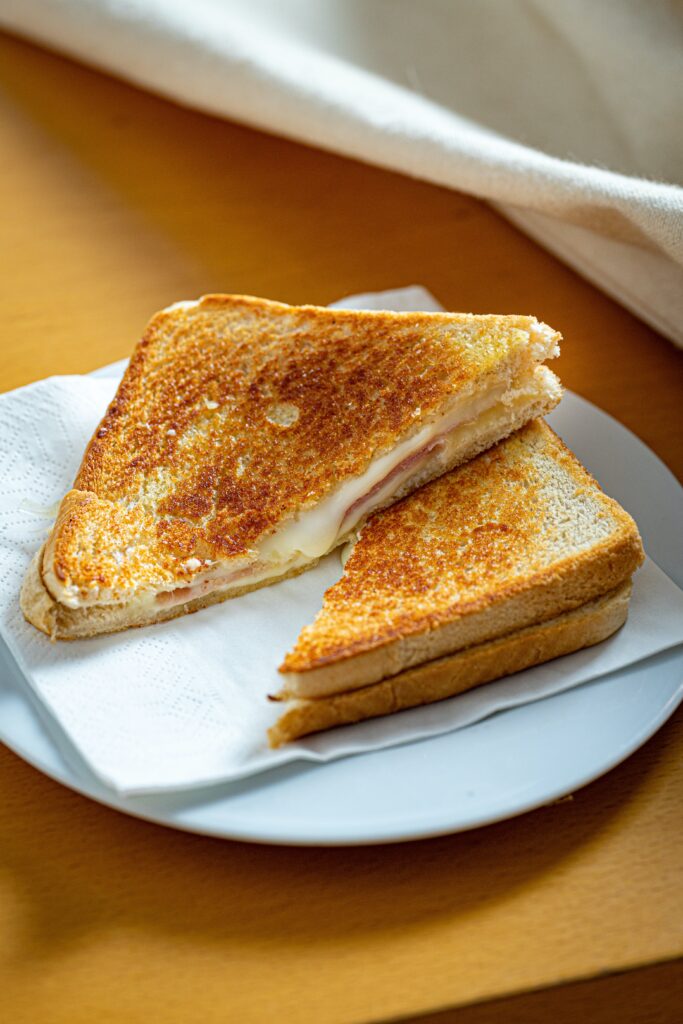Comfort food is typically associated with a sense of nostalgia, pleasure, and relaxation. When one thinks of comfort food, images of hearty, warming dishes like mac and cheese, lasagna, or a bowl of chicken soup come to mind. Incorporating comfort food into your family’s meal plan can create a warm, enjoyable dining environment while also promoting healthy eating habits. This blog post will guide you through understanding what comfort food really is, its importance, and how to seamlessly incorporate it into your family’s meal planning strategy.

Understanding What Comfort Food Really Is
Comfort food has a unique way of stirring up emotions and memories that go beyond the simple act of eating. It’s not just about the food itself, but rather the feelings of warmth, joy, and nostalgia it evokes. It could be your grandmother’s secret recipe for chicken pot pie, a stack of pancakes that takes you back to Sunday morning breakfasts, or a slice of birthday cake from your childhood celebrations. Comfort food brings a sense of familiarity and satisfaction that’s hard to beat.
However, comfort food doesn’t always have to be high in calories or laden with unhealthy ingredients. It’s possible to create healthier versions of your favorite comfort meals using fresh and wholesome ingredients without compromising on the taste and feeling of comfort. From homemade pizza with a whole grain crust and loaded with veggies to a hearty stew with lean meat and an abundance of vegetables – comfort food can be both delicious and nutritious. So, don’t just think of comfort food as a guilty pleasure, consider it a feel-good meal that can be a part of a balanced and healthy diet.
The Importance of Incorporating Comfort Food in Your Meal Plan
Incorporating comfort food in your family’s meal plan can yield multiple advantages. A kid’s curiosity can be piqued when their favorite mac and cheese is served, sparking conversations about food, its nutrients and why it’s important for their growth and health. Not only does this foster a learning environment at the dinner table, but it can also lead to healthier food habits in the long run.
When you serve up a plate of grandma’s famous chicken pot pie or your signature taco dish, it reinforces a sense of familial tradition. These meals, which have been passed down through generations or are a creation of your own, become part of the family lore. The table stories about these dishes and their origins can strengthen bonds and instill a sense of belonging.
Life, as we know, can be uncertain and stressful at times. During such periods, comfort food can play an essential role. A bowl of mom’s homemade soup during a tough week or a slice of pizza on the first day at a new school can provide a sense of normalcy and security.
Lastly, with its wide range of dishes, comfort food can add a delightful twist to your meal plans, preventing them from becoming monotonous. This ensures your family not only gets the required nutrition but also looks forward to their meals, making dining a pleasurable experience. Thus, incorporating comfort food in your family’s meal plan can contribute to physical well-being and emotional health, making meals a time for nourishment, connection, and enjoyment.

Strategies to Include Comfort Food in Your Meal Plan
Want to incorporate more comfort food into your family’s diet? A little bit of planning can go a long way. Kick off by creating a list of your family’s all-time favorite comfort dishes. Then, brainstorm ways to tweak these recipes for a healthier twist. Maybe you could swap regular pasta for whole grain in your lasagna, or sneak in some extra veggies in your homemade pizza.
Try introducing one comfort food meal every week, and if it’s a hit, consider making it a regular part of your meal plan. Weekends can be a great time to test out these dishes, as you might have a little more time for cooking and can sit down to savor the meal together.
Worried about busy weeknights? Whip up bigger batches of these meals during your leisure time and freeze the leftovers. These can come to your rescue on hectic days, providing a quick, comforting dinner without much effort.
So, as you can see, with some thoughtful planning and a little creativity, it’s quite feasible to include those comforting, delicious dishes in your family’s meal plan without compromising on health and nutrition. Your family will love the variety, and you’ll love knowing they’re getting a balanced diet – that’s a win-win!
Healthy Comfort Food Recipes to Try
Craving for comfort food doesn’t have to derail your family’s health goals. With a dash of creativity and a sprinkle of mindfulness, you can transform those guilty-pleasure recipes into nourishing meals. Imagine savoring a plate of lasagna brimming with vibrant veggies and whole grain pasta, or biting into homemade chicken nuggets baked to golden perfection. You can relish the familiar, creamy delight of mac and cheese, made healthier with whole grain pasta and a hint of veggies. And don’t forget about side dishes – why not swap out fried for oven-baked fries?
Sweet treats can also get a healthy makeover. Oatmeal cookies studded with dark chocolate chips could become the new family favorite. An apple crumble, rustled up with whole grain oats and a controlled amount of sugar, can end your meal on a sweet, yet wholesome, note. You’ll find an abundance of such nutritious spin-offs of your beloved comfort food recipes online. So, dive in, experiment, and enjoy the blend of comfort and health in your family’s meals. Remember, the aim is not to strip comfort food of its soul, but to enhance it with nutritional richness. With these recipes, you can enjoy those warm, cozy flavors, while still prioritizing your family’s well-being.
Turning Comfort Food Preparation Into a Family Activity
Cooking comfort food together as a family can be as enjoyable as eating it. These shared moments in the kitchen not only stir up precious memories but also make for an interactive and fun learning experience. Kids can be eager helpers, and their involvement can range from simple tasks like washing vegetables to more challenging ones like helping to knead pizza dough.
Each comfort food recipe can become a mini lesson about the ingredients used, the cooking techniques applied, and the nutritional benefits they offer. They’ll learn why swapping regular pasta for whole grain in the lasagna is a healthier option, or why adding extra veggies to the pizza can up its nutritional value.
Plus, these hands-on experiences can ignite a sense of achievement in your little ones when they see (and taste) the final product of their efforts. The act of cooking together promotes teamwork, patience, and an appreciation for food and its preparation. It’s a delightful way to create not just delectable meals, but also lasting family bonds and traditions in your kitchen.
Remember, the goal isn’t perfection but participation. So, put on those aprons, roll up your sleeves, and turn your kitchen into a comfort food workshop where everyone has a role to play. Who knows, this might even inspire your children to come up with their own healthy twist to your family’s favorite comfort dish. This family activity isn’t just about the food, it’s about togetherness, creating joyful memories, and paving the way for a healthier future.

Comfort Food and Special Occasions
Nothing can elevate celebrations and special occasions like the presence of comfort food. These familiar dishes, rich in tradition and taste, serve as more than just sustenance – they create an ambiance of warmth and togetherness. Imagine the joy on your child’s face when they see their favorite homemade pizza on their birthday, or the sense of nostalgia your post-Thanksgiving hot turkey sandwich brings, connecting generations and memories. Perhaps it’s a bowl of homemade soup that lifts spirits on a sick day or Grammie’s famous apple crumble that rounds off festive celebrations perfectly.
These foods become a symbol of love and care, reinforcing the sense of belonging and joy during these special times. So, when planning your family’s next celebration, consider integrating comfort foods into the menu. Not only will they enhance the festive vibe, but they’ll also foster deeper connections through shared culinary traditions and treasured family recipes.
Comfort food at these special occasions becomes more than just a meal – it’s a cherished part of the family’s legacy and a delicious reminder of home.

The Balance Between Comfort Food and Regular Meals
It’s essential to remember that incorporating comfort food into your family’s meals shouldn’t result in other nutritious foods taking a back seat. A balanced diet for your family should still primarily revolve around a diverse range of fruits, vegetables, whole grains, and lean proteins.
Think of comfort food as a delectable addition that enhances your meal plan, not as a substitute for your regular healthy meals. By striking this balance, you can ensure that your family continues to get the much-needed nutrients while relishing their favorite comfort dishes. This way, the pursuit of comfort doesn’t have to compromise healthful eating. It’s all about creating a harmonious blend of foods that not only satisfies the taste buds and the soul but also caters to the nutritional needs of your family.
Our Family’s Favourite Comfort Food Recipes:
Cavendish Stew (a family recipe which feeds a crowd and makes for great leftovers)
Featured Menu: Ribs, Baked Beans, Potato Salad, Corn on the Cob, and Cornbread
- Dry Rubbed Ribs
- New England Baked Beans
- Potato Salad
- Corn on the Cob (tips to make it extra tasty)
- Cornbread
